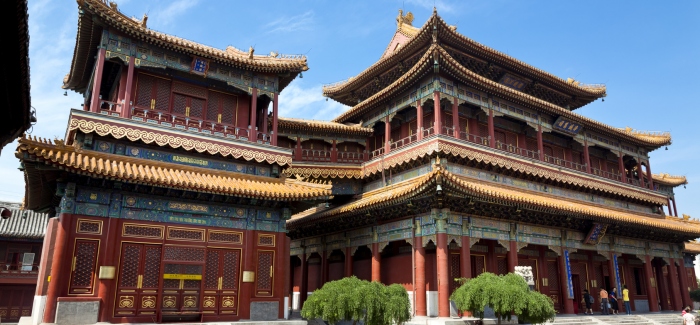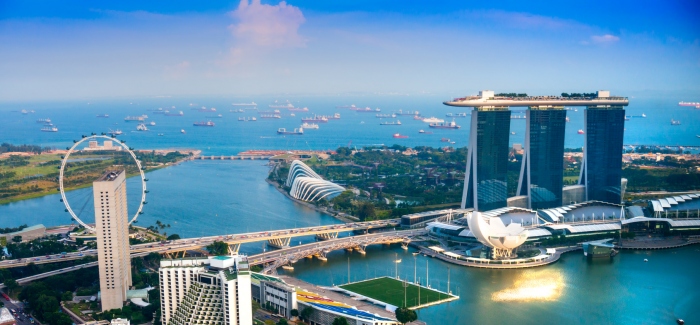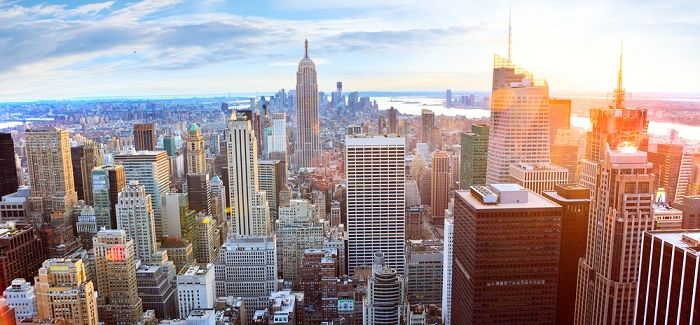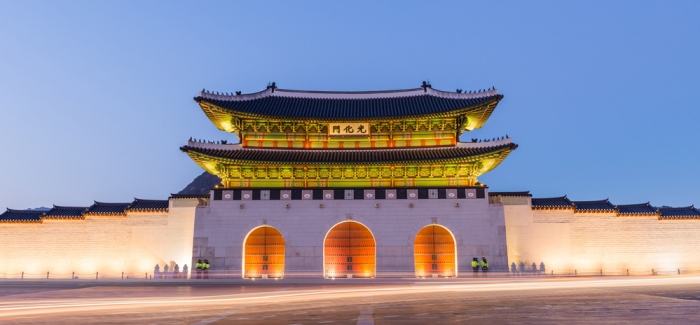A country offering a beguiling mix of the ancient and the futuristic, the commercial and the spiritual, warp-speed urban action and serene rural isolation, South Korea is a great playground for international students.
Its capital city, Seoul, has expanded into one of the world’s leading economic hubs, and Korea’s universities have in recent years experienced a similar boom. With an impressive 24 universities in South Korea ranked among the world’s top 800 universities in the QS World University Rankings® 2014/15 and 45 ranked in the top 300 of the QS University Rankings: Asia 2015, South Korea is one of the region’s major educational centers, providing an increasingly attractive study abroad option for students around the world.
Regardless of which South Korean university you choose to study at, read on for our list of the top 10 things to do in South Korea while you’re there, to really make the most of your experience!
1. Explore the urban jungle of Seoul
Top universities in South Korea’s capital: Seoul National University (SNU, 31st in the world rankings); Yonsei University (106th); Korea University (116th); Sungkyunkwan University (140th); Hanyang University (219th), Kyung Hee University (275th). For more top universities in South Korea, visit the QS University Rankings: Asia 2015.
A dizzying metropolis with a population of 10 million – exceeding even the likes of London, Berlin and New York – Seoul is one of the 21st century’s undisputed urban powerhouses. If you’re visiting Seoul for the first time, the best place to get a sense of its epic scale and to take in its sparkling cityscape after dark, is the iconic N Seoul Tower. Perched atop Namsan Mountain in the city center, the tower rises to a lofty 479 meters above sea level, providing visitors with stunning panoramic views across the city.
If you’re studying abroad in Seoul, you can be sure this sprawling metropolis will keep throwing up new adventures and surprises, no matter how long your program lasts. If you’re in need of a cultural top-up, start off with Seoul’s four UNESCO World Heritage sites: Changdeokgung, a 15th century palace built by the Joseon dynasty; the imposing 18th century Hwaseong Fortress; Jongmyo, the oldest extant Confucian shrine; and the Royal Tombs of the Joseon dynasty.
For retail therapy, head to the massive Dongdaemun Market, made up of 26 shopping malls stretching over 10 blocks. And if you want to delve into Seoul’s nightlife, the Hongdae district around Hongik University is South Korea’s party central – take your pick from literally hundreds of bars, restaurants, boutiques and nightclubs.
See where Seoul ranks in the QS Best Student Cities 2015 >
2. Visit Gyeongju, capital of the ancient kingdom of Silla
Top universities near Gyeongju: Pohang University of Science and Technology (POSTECH, 86th in the world rankings); Yeungnam University (135th in the Asian rankings); Kumoh National Institute of Technology (unranked); Handong Global University (unranked).
The ancient city of Gyeongju is known as ‘the museum without walls’. It gets rather overrun by swarms of tourists during the summer, with eight to nine million people visiting the area each year. But there is a very good reason for this – Gyeongju is an extraordinarily well-preserved slice of Korean history that will dazzle you with its beauty.
The former capital of the ancient kingdom of Silla, Gyeongju contains an array of architectural and historical treasures, including three UNESCO World Heritage sites: Seokguram Grotto, Bulguksa Temple, and Gyeongju Historic Areas. If you’re a history buff, head to the Gyeongju National Museum, which houses over 16,000 artifacts.
Did you know…? The kingdom of Silla was one of the longest-sustained dynasties in Asia’s history. One of the former three kingdoms of Korea (the others being Goguryeo and Baekje), Silla retained its autonomy for nearly 1,000 years until its dissolution in AD 935.
3. Sing your heart out at a ‘noraebang’
It may now be the domain of drunken hen nights and the occasional embarrassing office party in many Western countries – but karaoke has been massive all around Asia since the 1980s, and nowhere more so than in South Korea. The noraebang (meaning ‘song room’) is a national institution – providing private booths in which young Koreans let off steam by doing battle on the microphone.
You’ll find noraebangs all over South Korea, and even if you’re dubious at first we guarantee you won’t leave Korea without developing your own personal repertoire of off-key hits and cringeworthy classics. What better way of overcoming your inhibitions and breaking the ice with your new classmates?
4. Get spiritual with a Korean temple stay
As well as getting yourself a world-class education, studying in South Korea is also a chance to experience a new culture. If you really want to be immersed, even only for a few days, there is no better way of doing so than staying in a traditional Korean temple. Take time out in one of many blissfully secluded mountainous retreats populated by Korean Buddhist monks, which are open to visitors.
Temple stay was devised as an opportunity for foreigners to learn about Buddhist culture – so be warned, this won’t be your average holiday lounging around by a pool! Visitors live exactly as the monks do, which involves waking up before dawn, taking part in religious services, meditation, chanting and prostration, sticking to a vegetarian diet, and maintaining silence for large periods of time. It might not be everyone’s cup of tea, but if you’re ready to try something completely new, a temple stay will be an experience that will remain with you for life – and you never know, it may even change the way you look at the world.
Did you know…? Temple stays in Korea were popularized when the nation hosted the football World Cup in 2002, with Buddhist monks proposing the idea as an alternative way to accommodate visitors. Over 100,000 people now take part in temple stays in Korea each year.
5. Get a glimpse of North Korea at the DMZ
The history of Korea in the 20th century is fractious to say the least. Since the armistice that ended the Korean War in 1953, North and South Korea have maintained a tense and brittle truce that has frequently come close to breaking point. A trip to the isolated socialist state of North Korea will not be on your agenda – the country is all but closed to outsiders, and attitudes towards South Korea and Westerners are hostile. But you can take a guided tour of the surreal no-man’s-land that is the Korean Demilitarized Zone (DMZ), just a three-hour train journey north of Seoul.
The world’s most heavily militarized border, the DMZ spreads for 2.5 miles on either side of the 38th parallel, the border line that divides Korea into North and South. Tours run to Panmunjeon, the only place in the world where talks take place between officials from North and South Korea; the Third Tunnel, supposedly dug during the 1970s by North Korea in order to launch a surprise attack on Seoul; and the North Military Demarcation Line, a military barricade lined by North Korean soldiers.
If you’re intrepid and curious to find out more about the region's history and ongoing conflict, a DMZ tour is a good (and safe) way of finding out more.
6. Check out Gyeongbokgung Palace
Top universities near Gyeongbokgung Palace: Seoul National University (SNU, 31st in the world rankings); Yonsei University (106th); Korea University (116th); Sungkyunkwan University (140th); Hanyang University (219th); Kyung Hee University (275th).
Gyeongbokgung translates as ‘palace greatly blessed by heaven’ – which says it all really. Whether it was due to divine beneficence or old-fashioned craftsmanship we may never know, but this 14th century palace is a must-see if you’re interested in the architecture and historical legacy of Korea’s Joseon dynasty.
Featuring distinctive curved roofs, pillars and colorful tiling, ceremoniously attended by uniformed guards in unflinching solemnity, the palace is a perfect example of traditional Korean architecture. Located at the heart of Seoul’s government district, it retains an air of regal pomp even centuries after the downfall of its original inhabitants.
7. Make trails through Seoraksan National Park
Top universities nearby: Hallym University (651-700 in the world), Kangwon National University (201-300 in the Asian rankings), Kangnung National University (unranked).
Named after Seoraksan Mountain – the third-highest peak in Korea and the centerpiece of 400 kilometers of dramatic wilderness – Seoraksan National Park is one of the top things to do in South Korea for nature lovers and adventurers alike, located in the northeast corner of the nation within Gangwon Province. Featuring the spectacular peaks of the Taebaek mountain range and a rich variety of rare flora and fauna, the area is a UNESCO biosphere reserve and one of Korea’s most popular tourist attractions.
With many stunning hiking and walking trails, Seoraksan offers a perfect chance to take time out from the heady bustle of the nation’s cities and experience Korea at its most unspoiled – just don’t forget your camera!
8. Head south to Busan
Top universities in South Korea’s second city: Pusan National University (431-440 in the world rankings), Dong-A University (201-300 in the Asian rankings).
Returning to the nation’s urban centers, the bustling city of Busan in the southeast of the country is next on our list of things to do in South Korea. A busy port city known for its distinctive local dialect and rugged character, Busan offers the chance to explore yet another facet of Korean life. Slightly off the main tourist trail, Busan is the country’s second most populous city, and is full of hidden charms: the famously fresh seafood (live squid is a local delicacy – doesn’t come fresher than that!), a buzzing nightlife, historic temples, an idyllic surrounding coastline and a vibrant student population thanks to the campuses of Pusan National University and Dong-A University.
9. Go island-hopping at Dadohae Haesang National Marine Park
A huge archipelago consisting of around 1,700 small islands around Korea’s southern coastline, Dadohae Haesang National Marine Park is an explorer’s paradise. The most popular spots for visitors include the islands of Hongdo (also known as Red Island due to its distinctive hue) and Heuksando, featuring a series of beautiful peaks interspersed with untouched fishing villages.
Spend some time enjoying the breathtaking views and exploring the rugged landscape of the larger islands, then check the boat timetables and head out on a cruise around the remote rocky outcrops that make up the rest of the area’s dizzying cluster of islands.
10. Marvel at the volcanic wonders of Jeju-do Island
Top universities in South Korea’s Jeju-do Island: Jeju National University (201-300 in the Asian rankings).
Known as ‘the island of the gods’, Jeju-do Island is South Korea’s largest island and acclaimed as one of the world’s “seven new wonders of nature” in 2007 thanks to its exquisite coastlines, awe-inspiring volcanic landscape, pristine waterfalls, dense countryside and highly unique culture – as evidence in local traditions, architecture, dress and dialect. Created two million years ago by a series of volcanic eruptions, Jejo-do Island has in recent years become something like Korea’s answer to Hawaii.
Highlights for visitors include the island’s two botanical gardens, the Manjanggul lava-tube cave, ‘Sunrise Peak’ (a volcanic crater edge, so-called because it is the first part of the island to see the rising sun every morning), and the annual Jeongwol Daeboreum Fire Festival. One ofthe top things to do in South Korea for all travelers, Jejo-do Island is also the nation’s number one honeymoon destination.
More top things to do in South Korea:
- Have a close encounter with marine-life at the COEX Aquarium.
- Brush up on your chopstick skills and sample Korean cuisine.
- Hit the streets and join the crowds cheering on the Korean national football team.
- Check out the traditional markets at Buyeo.
- Get covered in mud at the annual Boryeong Mud Festival.
This article was originally published in November 2010. It was updated in June 2015.








